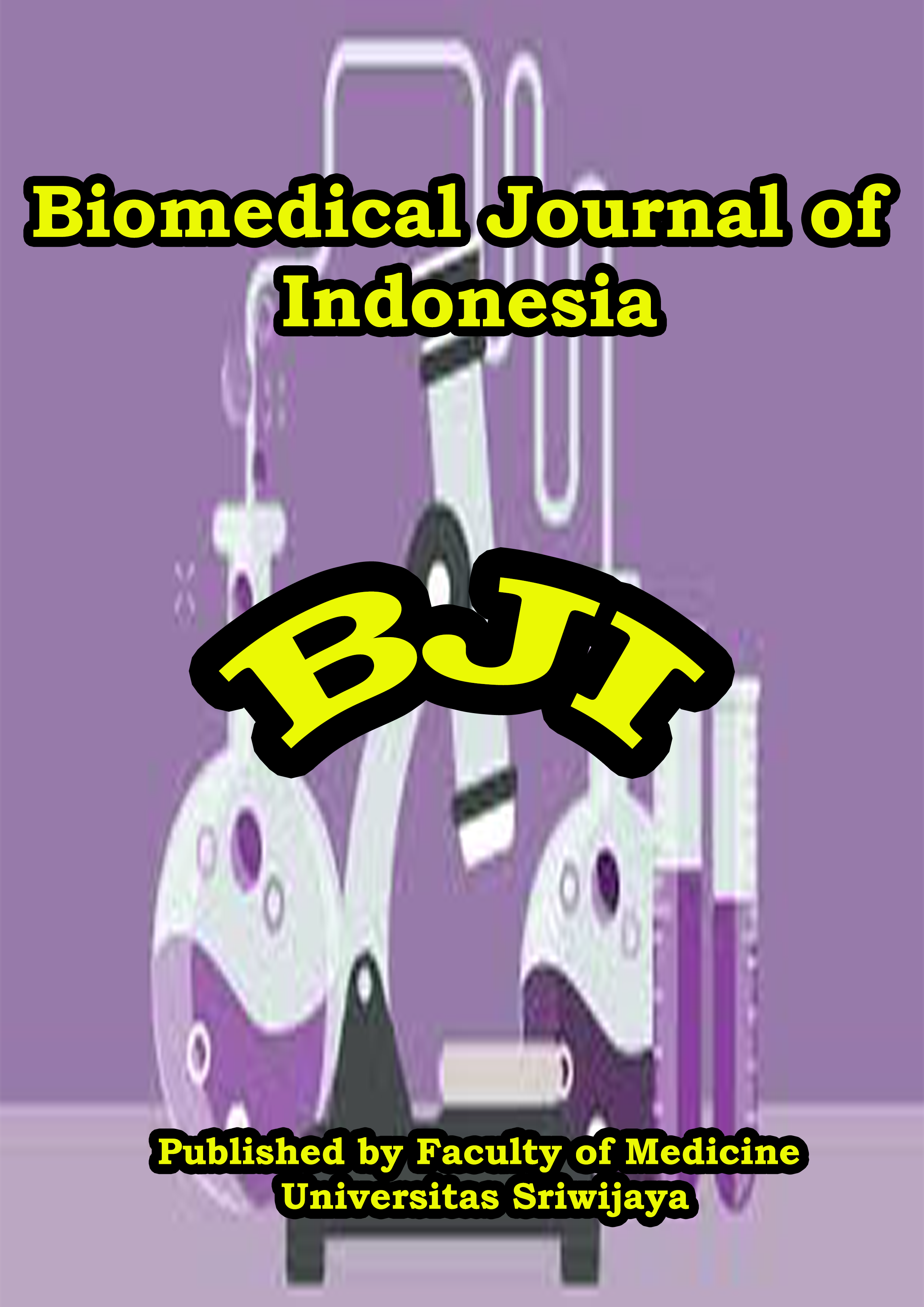Dermatological Infectious Diseases Prevalence at Dermatology-Venereology Outpatient Clinics of Hospitals in Medan
Main Article Content
Introduction. Skin infections are common in developing countries but are often not considered a significant health problem. One cause of this condition is a lack of epidemiological information about the prevalence and/or severity of the disease. This study aims to determine the prevalence and proportion of infectious skin diseases based on gender and age in the teaching hospitals at the Faculty of Medicine, Universitas Sumatera Utara, Medan, Indonesia. Methods. A descriptive-retrospective method was used in this study and the data were obtained from the medical records of patients at the dermatology and venereology polyclinic at Adam Malik Hospital and Prof. Dr. Chairuddin P. Lubis Universitas Sumatera Utara Hospitaletween 2017 and 2019. Results. A total of 12,686 patients were enrolled in this study, 26% were diagnosed with infectious skin disease with a total of 3,297 cases. Based on gender, patients were more dominated by men (55%) than women (45%). Most patients with infectious skin diseases were in the late adolescent age group or 17–25 years (20.4%) and the least were in the 0–4 years age group (3.2%). Furthermore, fungi were the dominant causative agent, which accounts for 51.5% of all cases. Conclusion. Infectious skin disease is a skin disease that is often found, especially in men and the age group of 17–25 years.
2. Santos MMD, Amaral S, Harmen SP, Joseph HM, Fernandes JL, Caunahan ML. The prevalence of common skin infections in four districts in Timor-Leste: a cross-sectional survey. BMC infectious diseases. 2010;10(61). doi:10.1186/1471-2334-10-61.
3. Hay RJ. Skin Disease in the Tropics and the Lessons that can be Learned from Leprosy and Other Neglected Diseases. Acta Derm Venereol. 2020;100(9):adv00113. doi:10.2340/00015555-3469
4. Alfadli R, Khairunisa S. Prevalensi Penyakit Kulit Infeksi dan Non-infeksi di Poliklinik Kulit dan Kelamin RSUD Jagakarsa Periode Februari 2023 - Januari 2024. J. Kdokt Meditek [Internet]. 2024;30(3):151-6. doi:10.36452/jkdoktmeditek.v30i3.3254.
5. Noegroho TA, Rosmela, Nabila LM. The prevalence of dermatological infection in outpatient dermatology clinic of RSUD Wonosari in January – September 2016. Indonesian Journal of medicine and health. 2017;8(2):96-101. doi:10.20885/ JKKI.Vol8.Iss2.art4
6. Ki V, Rotstein C. Bacterial skin and soft tissue infections in adults: A review of their epidemiology, pathogenesis, diagnosis, treatment and site of care. Can J Infect Dis Med Microbiol. 2008;19(2):173-184. doi:10.1155/2008/846453
7. Salgado CG, Brito AC, Salgado UI, Spenser JS. Leprosy. In Kang S, Amagai M, Bruckner AL, et al, editors. Fitzpatrick’s dermatology. 9th ed. New York: Mc Graw Hill; 2019. p.2892-924
8. Yossela T. Diagnosis and treatment of tinea cruris. J Majority.2015; 4(2): 122-8.
9. Dellière S, Jabet A, Abdolrasouli A. Current and emerging issues in dermatophyte infections. PLoS Pathog. 2024;20(6):e1012258. doi:10.1371/journal.ppat.1012258
10. Chaiyamahapurk S, Warnnissorn P. Prevalence and Pattern of Diseases of The Skin and Subcutaneous Tissue in A Primary Care Area in Thailand. Siriraj Medical Journal. 2021;73(6), pp. 357–362. doi:10.33192/Smj.2021.47.
11. Kar C, Das S, Roy AK. Pattern of skin diseases in a tertiary institution in Kolkata. Indian journal of dermatology. 2014; 209. doi:10.4103/0019-5154.127707
12. Aman S, Nadeem M, Mahmood K, Ghafoor MB. Pattern of skin diseases among patients attending a tertiary care hospital in Lahore, Pakistan. Journal of Taibah University Medical Sciences. 2017;12(5), pp.392-396. doi:10.1016/j.jtumed.2017.04.007.
13. Ayanlowo O, Okesola O. Pattern of Skin disorders across age groups. Res J of Health Sci. 2017;5(3). doi: 10.4314/rejhs.v5i3.4
14. Chen W, Mempel M, Traidl-Hofmann C, Al Khusaei S, Ring J. Gender aspects in skin diseases. J Eur Acad Dermatol Venereol. 2010 Dec;24(12):1378-85. doi: 10.1111/j.1468-3083.2010.03668.x.
15. Yakupu A, Aimaier R, Yuan B, Chen B, Cheng J, Zhao Y, et al. The burden of skin and subcutaneous diseases: findings from the global burden of disease study 2019. Front Public Health. 2023;11:1145513. doi:10.3389/fpubh.2023.1145513

